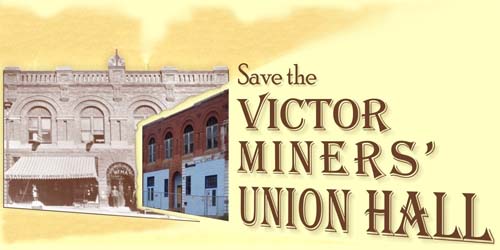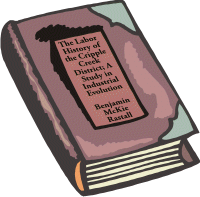 |
Victor
|
The Labor History of the Cripple Creek District;
A Study in Industrial Evolution
by Benjamin McKie Rastall

pages 160-162
Comparison Of The Strikes
The two Cripple Creek strikes permit some instructive comparisons. The first strike was entirely natural in its origin, the result of self-existing and compelling economic circumstances, a great economic depression, a large surplus of labor, great differences in a single occupation and small field, as to hours and wages of labor. The second strike was as artificial in its origin as the first was natural, the result of a forced labor movement and of the manipulations of labor leaders. The first strike worked itself out among frontier conditions, and illustrates remarkably the labor movement in its infancy in newly settled regions. The second strike occurred among the conditions of a most thoroughly developed industrial community, and shows extreme types of organization and collective action. Many of the contrasts between the strikes are those of entirely different social stages. The result of the first strike was a definite, settled, industrial condition, the result of the second the entire elimination of the power of one organized factor.
The use of state authority had a very close and vital connection with both strikes, and with suggestively contrasted results. The conditions of the first strike were generally favorable to the mine owners, and it seemed practically impossible for the miners to win the fight. But the power of the state was interposed in their favor and they won. In the second strike the conditions were decidedly favorable to the miners. They were strongly intrenched in power, thoroughly organized, and had a large financial backing. But the power of the state was exerted in favor of the mine owners and they won. In both strikes the state held the balance of power, and the sympathetic use of its authority reversed the expected result, in the first case in favor of one side, and in the second in favor of the other. There is a suggestion here of a probable lack of appreciation of the strength of the state as a factor in past labor history, and of its possible importance in the future.
Both the Cripple Creek strikes point clearly to the fact that the ever-recurring dispute between civil and military authorities when both are being actively exercised in the same area, has yet to be settled. It may not be out of place here to throw out a suggestion that the federal government might well carry the nationalization of the state militia a step further, and arrange that whenever called into active service for more than a very brief time it shall be placed under the command of a regular army officer. State military authorities are of political appointment, and likely to be of small military experience or knowledge. It is not to be expected but that such men should incline to over-importance when called into sudden authority, should think little of overriding the civil authorities, and should use their power in full consciousness of political exigencies, or that when they are called to a community violently opposed to them in politics a storm of protest should be raised. The United States army officer is a man of training and legal knowledge, versed in the quiet exercise of authority, and used to his power. He would at least be free from the blinding effect of local political interests, and his authority would tend to be more judiciously used, more unquestionably accepted and more thoroughly respected by both sides.
No especial discussion need be given of the part played by politics in the Cripple Creek strikes. Every phase of the conflicts had its political as well as industrial aspects. So completely was the political element involved that the whole narrative can be read with reference to its political disclosures, and the significance of the struggle is as deep politically as industrially.
There is a lesson to labor unions, though not of an unusual sort, in the second strike, in the danger from loss of democracy and minority rule. The hope of unionism lies in its self control. Intelligent interest upon the part of the great mass of the membership, and the retention of local ballot control, are essential to safety, and the danger to labor from a powerful body superior to its control is as great when that body represents its own organization as when it represents the ever-decried ranks of capitalism. When the union miners of the Cripple Creek District allowed their active interest to flag, and permitted minority control, which in turn delegated its power to a radical committee, they invited almost certain downfall.
NEXT: Significance Of The Labor History